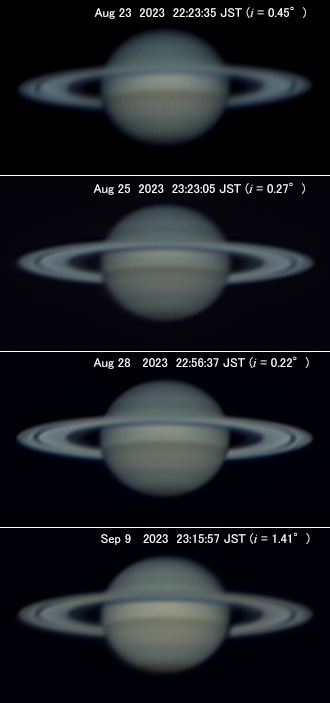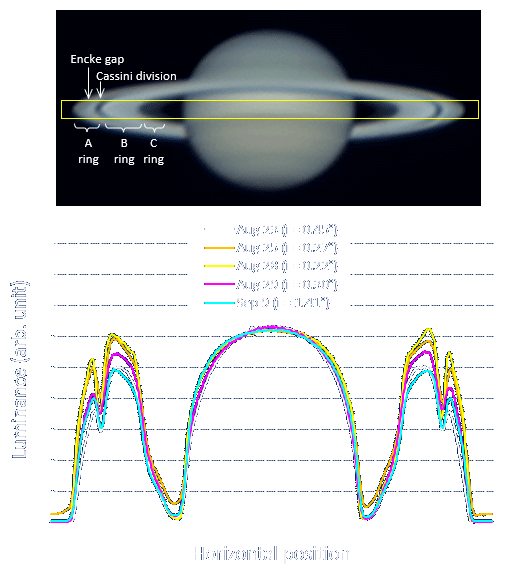
Fig. 1 Saturn images before & after opposition in 2023
i : Phase angle of Saturn at taken time

Fig. 2 Comparison of horizontal luminance distribution
Acquired average counts in yellow rectangle with Makali'i 2.1
 Fig. 1 Saturn images before & after opposition in 2023 i : Phase angle of Saturn at taken time |
 Fig. 2 Comparison of horizontal luminance distribution Acquired average counts in yellow rectangle with Makali'i 2.1 |
| Photography condition of images used for measurement: | |
| Optical: | Kasai 20cm(7.9") F6 Newtonian (NERO-200DX), with Televue Powermate 5× (Syn. F35.8) |
| Auto-guided with TAKAHASHI EM-200 Equatorial | |
| Camera: | ZWO ASI 183MC with IDAS IR-cut filter |
| Location: | Hitachi city & Hitachi-naka city, Ibaraki pref. |
| Camera Settings: | 16 flames/sec.×130sec., Exp....1/16sec |
| 1300 flames stacked with AutoStakkert3 & wavelet process with Registax6 | |
Currently the following two effects have been thought to be influential as the causes of opposition surge.
Fig. 1 shows a set of Saturn images taken from Aug 23 until Sep 9, 2023. "i" in images represents the phase angle meaning the elongation of the Sun and the Earth seen from the center of Saturn. Smaller i means that the Saturn is shone by sunlight from closer to the front. You can recognize that the widest B-ring looks obviously brighter than the body of Saturn on Aug 28, the day after the opposition with i = 0.22°. Fig. 2 shows a comparison of horizontal distribution of luminance of individual Saturn images extracted from a yellow rectangle indicated on an upper example image. The luminance value has been normalized to that of the body of Saturn. The luminance of B-ring on Aug 23 (white) and Sep 9 (cyan) is lower than the body of Saturn. In contrary, it was observed that the luminance increased on dates with smaller - i (orange, yellow and magenta). Fig. 3 plotted the left and right average of maximum luminance of B-ring as a function of i. The vertical axis indicates relative luminance on the basis of that on Sep 9. The opposition surge of Saturn ring can be observed during a short period with i less than 0.5°. From this observation, it was confirmed that the ring becomes brighter by 25% from normal period. |
Figure 4 shows an overlay plot of the phase angle dependence of the relative luminance of Saturn's rings for the years 2021 and 2023 (Observation result in 2021). Due to the varying positions of Earth and Saturn in their orbits, the minimum phase angle in 2023 is approximately 0.2°, indicating less favorable observational conditions for the opposition surge compared to 2021 (approx. 0.1° in minimum). However, it is evident that the luminance of Saturn's rings at the same phase angle is higher in 2023. This is believed to be the result of the Saturn's ring being observed from shallower angles in 2023, as indicated by Saturn images inserted in the figure, resulting in a higher luminance per unit area of the rings compared to that in 2021. |
Saturn images in season of 2023 |
Saturn images in season of 2022 |
| Copyright(c) 2023 by Naoyuki Kurita, All rights reserved. | ||
| To top page | To Moon&Planets index |